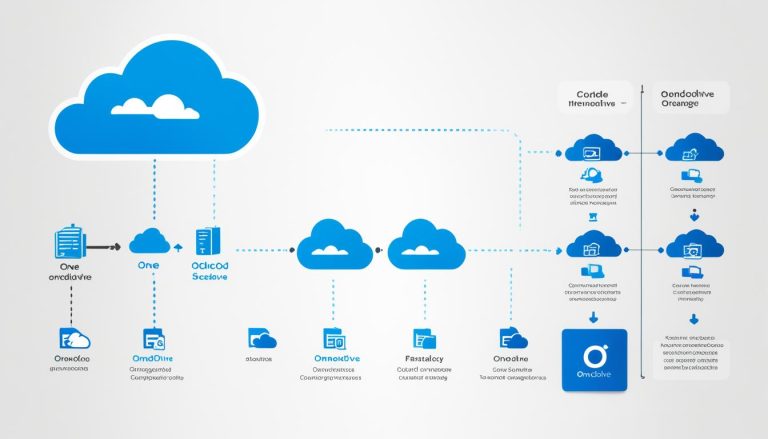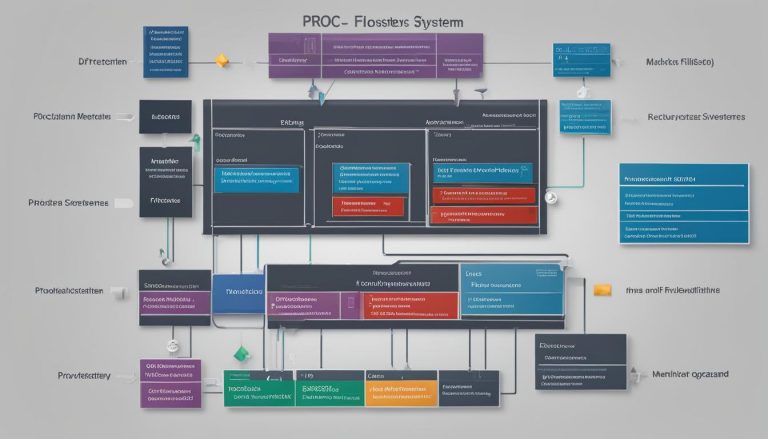Explaining CGI (Common Gateway Interface) Basics
I’m here to provide you with a comprehensive understanding of CGI (Common Gateway Interface) and its role in web development. Whether you’re a beginner looking to learn CGI or an experienced developer seeking a refresher, this article will cover all the essential concepts, definitions, and tutorials you need.
CGI is a standard that enables communication between web servers and external databases or information sources. Think of it as a bridge that allows web servers to interact with applications, process data, and send back responses. CGI scripts, typically written in languages like Perl, C, or shell scripts, play a crucial role in enabling this communication.
One of the key advantages of CGI is its ability to interface with HTML, enabling the dynamic generation of content for web pages. This means that CGI empowers developers to create interactive and personalized user experiences, making websites more engaging and responsive.
CGI is widely accepted and utilized in web development due to its well-defined standard and compatibility across different systems and platforms. Its versatility makes it suitable for various tasks, including form processing, data validation, and file uploads.
Key Takeaways:
- CGI (Common Gateway Interface) facilitates communication between web servers and external databases or information sources.
- CGI scripts, written in languages like Perl, C, or shell scripts, enable web servers to interact with applications and process data.
- CGI allows applications to interface with HTML, enabling the dynamic generation of content for web pages.
- CGI is a well-defined and supported standard in web development, ensuring compatibility across systems and platforms.
- CGI is widely used for tasks such as form processing, data validation, and file uploads.
Features of CGI
CGI (Common Gateway Interface) scripts play a crucial role in web development, offering a wide range of features and capabilities. Let’s explore some of the key features that make CGI an essential tool in dynamic content generation:
- Multiple Programming Language Support: CGI scripts can be written in languages such as Perl, C, or shell scripts, providing developers with flexibility and choice when it comes to coding their applications.
- Interfacing with HTML: One of the strengths of CGI is its ability to interact with HTML, allowing for seamless integration of dynamic content with web pages. This enables the creation of interactive and personalized user experiences.
- Task Execution: CGI scripts are versatile and can perform various tasks, ranging from form processing and data validation to file uploads. This makes CGI an ideal solution for handling user input and data manipulation.
Among the notable use cases for CGI is the creation of counters. Due to its streamlined execution process, CGI is currently the quickest method available for implementing counters on websites.
Another advantage of CGI is its compatibility with today’s browsers. Since CGI has been widely adopted and implemented, it ensures that CGI-based applications will function smoothly across different browsers and devices.
To further illustrate the features of CGI, consider the following comparison table:
| Feature | CGI | Alternative |
|---|---|---|
| Programming Languages | Perl, C, Shell Scripts | Java, Python, PHP |
| HTML Integration | Yes | Yes |
| Task Execution | Form processing, data validation, file uploads | Database queries, web service integration |
| Counter Implementation | Quick | Variable |
| Browser Compatibility | Wide | Wide |
As you can see, CGI offers a unique set of features that make it a powerful tool for dynamic content generation. Its ability to interface with HTML, support multiple programming languages, and handle various tasks makes it a popular choice among developers.
In the next section, we will delve into the advantages of CGI and explore why it continues to be widely used despite its limitations.
Advantages of CGI
CGI (Common Gateway Interface) offers several advantages that make it a favorable choice for implementing simple web-based tasks. Let’s take a closer look at the key advantages of CGI:
- Quick Implementation:CGI provides a quick and straightforward method for implementing simple web-based tasks such as form processing or data manipulation. Its ease of implementation allows developers to rapidly create functional solutions.
- Existing Code Base:There is a vast existing code base of CGI scripts, especially in Perl. This extensive library of pre-existing scripts can be readily used or customized to meet specific requirements, saving development time and effort.
- Well-Defined Standard:CGI is a well-defined and supported standard in web development. Its specifications provide a clear framework for the interaction between web servers and external applications. This standardization ensures compatibility across different systems and platforms, making CGI a reliable choice for web development projects.
In addition to these advantages, CGI-based counters and CGI code to perform simple tasks are widely available, further simplifying the development process.
CGI Advantages
| Advantages | Description |
|---|---|
| Quick Implementation | CGI offers a quick and straightforward method for implementing simple web-based tasks. |
| Existing Code Base | There is a large library of pre-existing CGI scripts, especially in Perl, that can be readily used or customized. |
| Well-Defined Standard | CGI follows a well-defined standard in web development, ensuring compatibility across different systems and platforms. |
Overall, CGI’s advantages, such as quick implementation, an existing code base, and a well-defined standard, contribute to its popularity in developing simple web-based tasks.
Disadvantages of CGI
While CGI (Common Gateway Interface) offers a range of features and benefits, it also has its share of disadvantages that web developers should consider. In this section, we will discuss some of the key drawbacks of using CGI for web development.
-
Page Load Overhead
Each page load in CGI can incur overhead due to the need to load the script into memory. This overhead can impact website performance, particularly in high-traffic scenarios. With each request, the server must load the CGI script, execute it, and generate the response, resulting in slower load times for web pages.
-
Limited Caching Capabilities
One of the limitations of CGI is its limited caching capabilities. Unlike other web development approaches, CGI scripts do not easily allow for caching of data in memory between page loads. This can affect both performance and scalability, as CGI scripts must retrieve and process data from external sources for every request, leading to increased server load and slower response times.
-
Security Vulnerabilities
CGI scripts executed on the server can be vulnerable to security vulnerabilities if proper user input validation is not implemented. Failure to validate user input can leave web applications exposed to potential attacks such as cross-site scripting (XSS), SQL injection, or remote code execution.
-
Scalability Issues
CGI is not well-suited for handling large volumes of traffic or requests. As the number of concurrent requests increases, the performance of CGI-based applications can suffer, resulting in slower response times or even crashes. This scalability limitation can make CGI a less desirable option for websites that anticipate significant traffic growth.
Despite these disadvantages, CGI remains a widely used standard for enabling dynamic content generation on the web. However, in order to overcome these limitations, developers often turn to alternative approaches that offer better performance, scalability, and security features.
Image: For a visual representation of the disadvantages of CGI, refer to the image below:

Conclusion
CGI, or Common Gateway Interface, is a widely used standard for enabling dynamic content generation on the web. It provides a simple and compatible method for implementing web-based tasks such as form processing and data manipulation. CGI scripts, written in languages like Perl, C, or shell scripts, allow applications to interact with HTML and generate dynamic content for web pages.
Despite its advantages in terms of quick implementation and compatibility, CGI does have its limitations. One drawback is the overhead incurred during each page load, which can affect performance, especially in high-traffic websites. Additionally, CGI scripts do not easily allow for caching data in memory between page loads, which can impact performance and scalability. Security vulnerabilities can also arise if user input is not properly validated.
Fortunately, there are alternatives to CGI that provide more efficient and scalable options for web development. Technologies like FastCGI, PHP, Java Servlets, and web frameworks like Django offer improved performance and scalability. These alternatives are preferred when handling large volumes of traffic or requests. However, CGI remains a valuable tool for simple web-based tasks and continues to be utilized in various applications for its compatibility and ease of implementation.
FAQ
What is CGI?
CGI stands for Common Gateway Interface. It is a standard that enables communication between web servers and external databases or information sources.
How does CGI work?
CGI acts as middleware, allowing web servers to interact with applications that process data and send back responses. CGI scripts written in languages like Perl, C, or shell scripts enable applications to interface with HTML, enabling dynamic content generation for web pages.
What are the typical uses of CGI scripts?
CGI scripts can be used for tasks such as form processing, data validation, and file uploads. They are also commonly used for creating counters and performing simple web-based tasks.
What are the advantages of using CGI?
CGI offers quick implementation, as there is a large existing code base of CGI scripts, especially in Perl, which can be readily used or customized. It is a well-defined and supported standard in web development, ensuring compatibility across different systems and platforms.
What are the disadvantages of using CGI?
CGI incurs overhead by having to load the script into memory for each page load, which can impact performance, especially in high-traffic websites. It does not easily allow for caching of data in memory between page loads, affecting performance and scalability. CGI scripts executed on the server can also be vulnerable to security vulnerabilities if user input is not properly validated.
Are there alternatives to CGI?
Yes, there are alternatives such as FastCGI, PHP, Java Servlets, and web frameworks like Django that provide more efficient and scalable options for web development.
Is CGI widely used in web development?
Yes, CGI is a widely used standard for enabling dynamic content generation on the web. However, it is important to consider its limitations and explore alternatives for more complex or high-traffic applications.
- About the Author
- Latest Posts
Janina is a technical editor at Text-Center.com and loves to write about computer technology and latest trends in information technology. She also works for Biteno.com.






